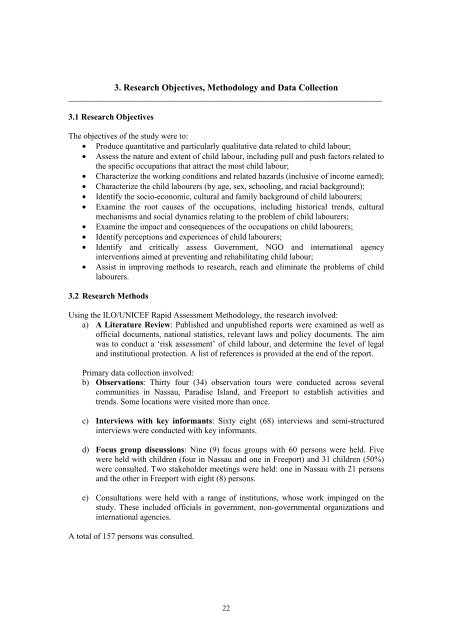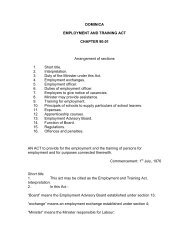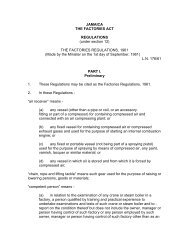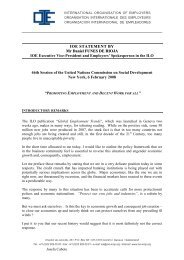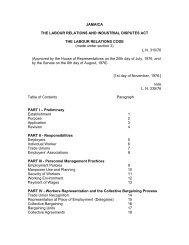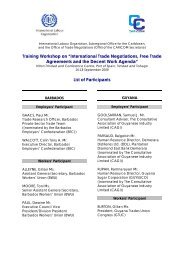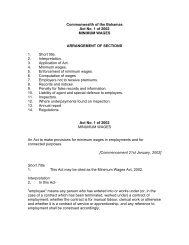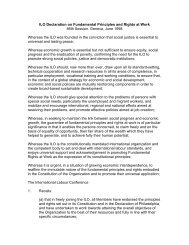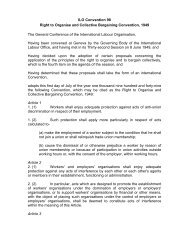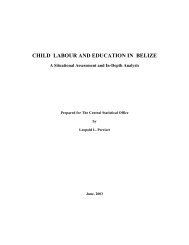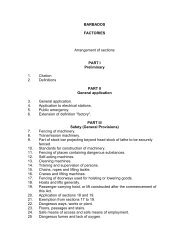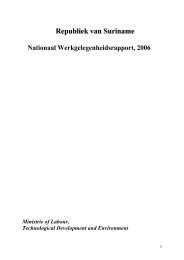ILO REPORT ON CHILD LABOUR IN BARBADOS - International ...
ILO REPORT ON CHILD LABOUR IN BARBADOS - International ...
ILO REPORT ON CHILD LABOUR IN BARBADOS - International ...
Create successful ePaper yourself
Turn your PDF publications into a flip-book with our unique Google optimized e-Paper software.
3. Research Objectives, Methodology and Data Collection<br />
___________________________________________________________________________<br />
3.1 Research Objectives<br />
The objectives of the study were to:<br />
• Produce quantitative and particularly qualitative data related to child labour;<br />
• Assess the nature and extent of child labour, including pull and push factors related to<br />
the specific occupations that attract the most child labour;<br />
• Characterize the working conditions and related hazards (inclusive of income earned);<br />
• Characterize the child labourers (by age, sex, schooling, and racial background);<br />
• Identify the socio-economic, cultural and family background of child labourers;<br />
• Examine the root causes of the occupations, including historical trends, cultural<br />
mechanisms and social dynamics relating to the problem of child labourers;<br />
• Examine the impact and consequences of the occupations on child labourers;<br />
• Identify perceptions and experiences of child labourers;<br />
• Identify and critically assess Government, NGO and international agency<br />
interventions aimed at preventing and rehabilitating child labour;<br />
• Assist in improving methods to research, reach and eliminate the problems of child<br />
labourers.<br />
3.2 Research Methods<br />
Using the <strong>ILO</strong>/UNICEF Rapid Assessment Methodology, the research involved:<br />
a) A Literature Review: Published and unpublished reports were examined as well as<br />
official documents, national statistics, relevant laws and policy documents. The aim<br />
was to conduct a ‘risk assessment’ of child labour, and determine the level of legal<br />
and institutional protection. A list of references is provided at the end of the report.<br />
Primary data collection involved:<br />
b) Observations: Thirty four (34) observation tours were conducted across several<br />
communities in Nassau, Paradise Island, and Freeport to establish activities and<br />
trends. Some locations were visited more than once.<br />
c) Interviews with key informants: Sixty eight (68) interviews and semi-structured<br />
interviews were conducted with key informants.<br />
d) Focus group discussions: Nine (9) focus groups with 60 persons were held. Five<br />
were held with children (four in Nassau and one in Freeport) and 31 children (50%)<br />
were consulted. Two stakeholder meetings were held: one in Nassau with 21 persons<br />
and the other in Freeport with eight (8) persons.<br />
e) Consultations were held with a range of institutions, whose work impinged on the<br />
study. These included officials in government, non-governmental organizations and<br />
international agencies.<br />
A total of 157 persons was consulted.<br />
22


